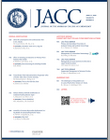 The concept of canalopathy covers a large number of genetic diseases linked to dysfunctions of ion channels of various kinds. Some of these canalopathies have a muscular and / or cardiac phenotype such as Andersen-Tawil syndrome (ATS1). This rare and little-known neuromuscular disease is transmitted as an autosomal dominant inherited disease. It is linked to mutations in the KCNJ2 gene which codes for a channel regulating the transmembrane passage of potassium at the level of cardiomyocytes and muscle fibers. Reported for the first time in 1971, the ATS1 combines three main manifestations: episodes of periodic paralysis, sometimes severe and / or inaugural cardiac arrhythmia and developmental abnormalities including, among others, more or less suggestive facial dysmorphia.
The concept of canalopathy covers a large number of genetic diseases linked to dysfunctions of ion channels of various kinds. Some of these canalopathies have a muscular and / or cardiac phenotype such as Andersen-Tawil syndrome (ATS1). This rare and little-known neuromuscular disease is transmitted as an autosomal dominant inherited disease. It is linked to mutations in the KCNJ2 gene which codes for a channel regulating the transmembrane passage of potassium at the level of cardiomyocytes and muscle fibers. Reported for the first time in 1971, the ATS1 combines three main manifestations: episodes of periodic paralysis, sometimes severe and / or inaugural cardiac arrhythmia and developmental abnormalities including, among others, more or less suggestive facial dysmorphia.
In an article published in April 2020, an international consortium led by the Italian team from Pavia, reports clinical, electrophysiological and genetic data from the world’s largest series of patients with ATS1. One hundred and eighteen patients were recruited from 23 centers, most of them cardiologists. Their data was collected in a database in order to specify the phenotypes, particularly at the cardiac level. The occurrence of serious and potentially fatal episodes of cardiac arrhythmia has been shown to be very common, with paralytic attacks very rarely in the foreground. The authors strongly advise against the use of amodiarone.
